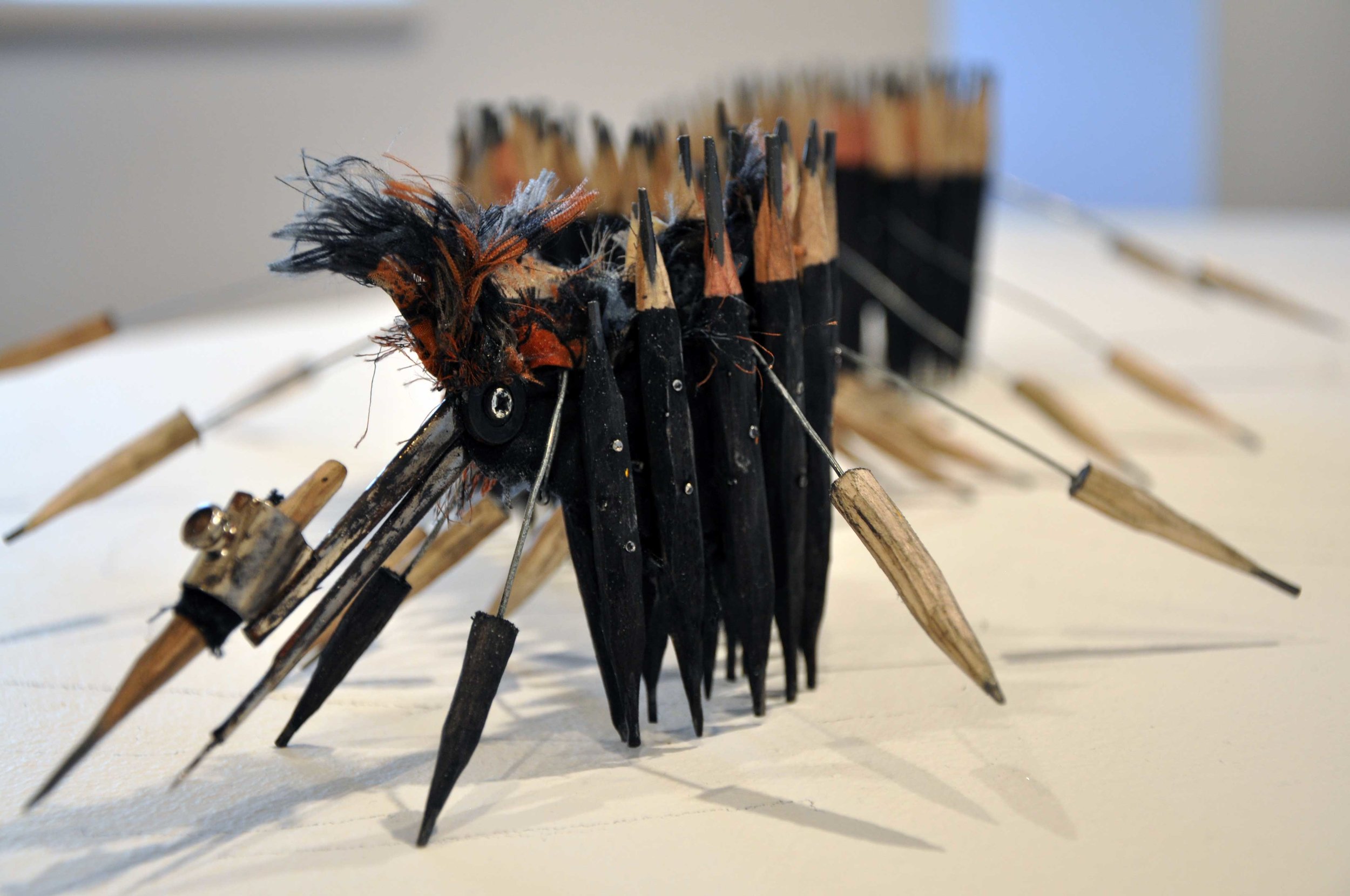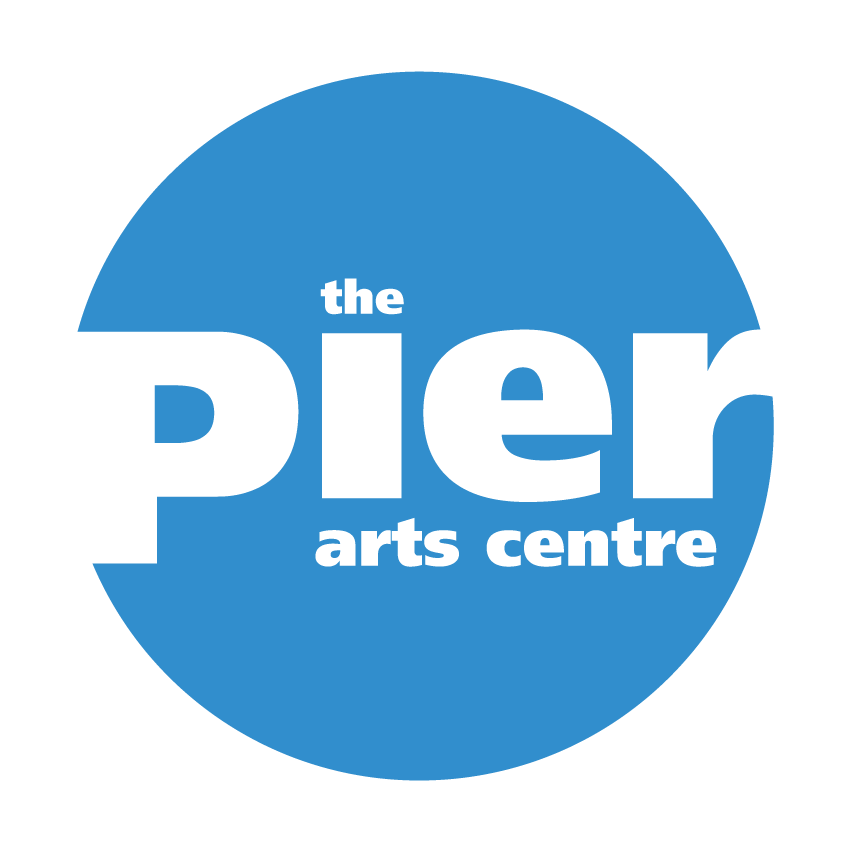Pier Arts Centre Museum and Galleries Assistant Kari Adams reflects on the importance of artsit collectives.
As the hanging week for our next temporary exhibition Drawing Routes unfolds, there is a question which has been lingering in my mind: why is it important to showcase work as an artist collective?
As the Museum and Galleries Assistant at the Pier, and one of the most recent artists to join Mòti, observing the installation process has put a spotlight on the relevance of being a part of a collective and the value of the framework which it provides.
Mòti is composed of Orkney-based art graduates, bringing together creatives from both fine art and design-based practices. Having all entered into the post-art school territory of the art world, the challenge of continuing individual practice can be troublesome – most notably, without the familiarity of the studio environment there is always the risk of feeling lost and isolated. This is where the artist collective can offer the comfort and semblance of a community. Simply having people to engage with, and to talk to, can allow for a much broader and outward looking perspective. Exhibition opportunities such as Drawing Routes where we were invited by the Pier, undoubtedly give the collective exposure whilst building and strengthening professional relationships – carrying with it the potential to cooperatively reap benefits as well as recognise individual achievements.
10 of the exhibiting Moti Collective members. From left to right: Kristyn Grieve, Norna Sinclair, Nick Gordon, Ingrid Garrioch, Louise Barrington, Steph Spence, Kari Adams, Kerrianne Flett, Emma Fraser and Frances Scott
Unfortunately, seeking out opportunities can be tough - both individually and collectively. Funding is usually one of the main obstacles for artists today when trying to showcase work - which is why coming together and honing different skill-sets is so important. For example, responsibilities can be shared amongst members when communicating through digital platforms, making new contacts and filling-out grant applications. This gathering (and sharing) of knowledge as we work through various challenges and processes together is vital and invaluable – especially as we venture further into our artistic careers. Likewise, the quality of learning gained directly from each new experience can be appropriated practically, undeniably refining individual talents and shaping the identity of the collective as a whole.
Presence and purpose appear to be the two key characteristics which provide the momentum in an artist collective like Mòti; not only encouraging us to produce new work, but at times providing the freedom and opportunity to venture into the unknown – a space where exploration and discovery can take form. For me, there exists a coactive energy which can really serve as a driving force; giving me a sense of purpose and encouraging direction.
Drawing Routes features 12 Mòti members making marks – unveiling individuality whilst underscoring the question of simply, why not do it all together? In a world where the everyday is constantly drawing divides, it is paramount that we support and embrace each other in the moment – and have the courage to see it as our time to render new lines.







DRAWING ROUTES experimentations in the art and act of drawing is on display at The
Pier Arts Centre, 10 Feb – 10 March 2018
Related Material
What is a collective?
COLLECTIVE Loosely defined, an art collective is a group of artists working together to achieve a common objective
Examples of an Artist Collective:
FLUXUS
Fluxus (to-flow) was founded in 1960 by the Lithuanian/American artist George Maciunas, and began as a small but international network of artists and composers. Rooted in experimental music, it was named after a magazine which featured the work of musicians and artists centred around avant-garde composer John Cage - it was characterised as a shared attitude rather than a movement.
The first Fluxus event was staged in 1961 at the AG Gallery in New York and was followed by festivals in Europe in 1962. The major centres of Fluxus activity were New York, Germany and Japan. The collective valued simplicity and anti-commercialism, with chance and accident playing a big part in the creation of works, and humour also being an important element.
Many key avant-garde artists in the 60s took part in Fluxus, including Joseph Beuys, Dick Higgins, Alice Hutchins, Yoko Ono, Nam June Paik, Ben Vautier, Robert Watts, Benjamin Patterson and Emmett Williams.
George Maciunas, Dick Higgins, Wolf Vostell, Benjamin Patterson & Emmett Williams performing “Philip Corner’s Piano Activities” at “Fluxus Internationale Festspiele Neuester Musik,” Weisbaden (1962). Photograph by Hartmut Rekort.
SUPERFLEX
Superflex is a Danish artists' group founded in 1993 by Jakob Fenger, Rasmus Nielsen and Bjørnstjerne Christiansen. The collective describe their projects as Tools, as proposals that invite people to participate in and communicate the development of experimental models that alter the economic production conditions. Often the projects are assisted by experts who bring in their special interest, these tools can then be further used and modified by their users.
Superflex have collaborated in the third annual Hyundai Commission at Tate Modern, a series of site-specific works created for the Turbine Hall (part of the partnership between Tate and Hyundai Motor). One Two Three Swing! is an installation which invites visitors to the gallery to engage with the artwork, and participate in a collective energy - challenging the laws of nature and how we move through and interpret a gallery space.



